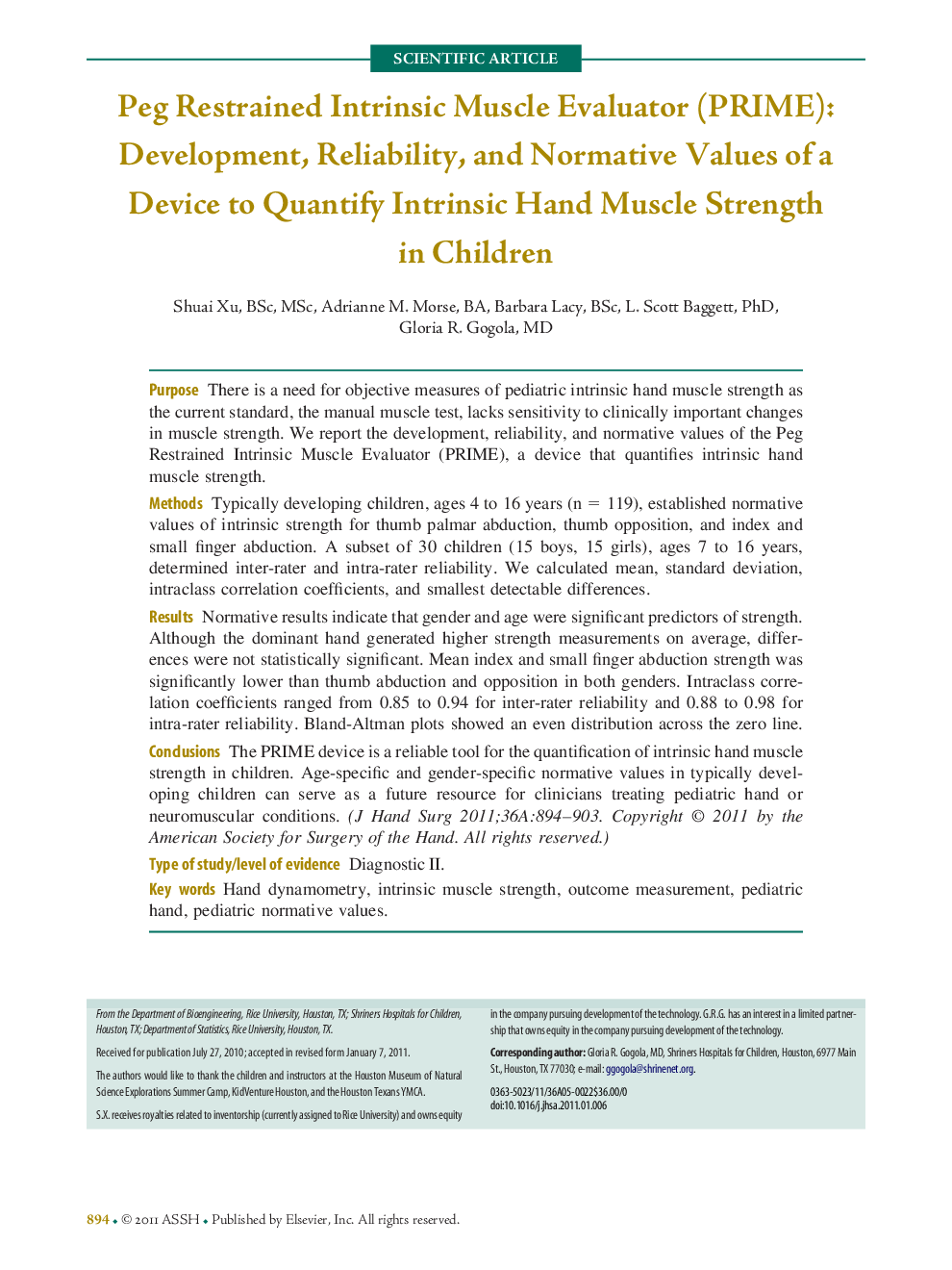| Article ID | Journal | Published Year | Pages | File Type |
|---|---|---|---|---|
| 4070553 | The Journal of Hand Surgery | 2011 | 10 Pages |
PurposeThere is a need for objective measures of pediatric intrinsic hand muscle strength as the current standard, the manual muscle test, lacks sensitivity to clinically important changes in muscle strength. We report the development, reliability, and normative values of the Peg Restrained Intrinsic Muscle Evaluator (PRIME), a device that quantifies intrinsic hand muscle strength.MethodsTypically developing children, ages 4 to 16 years (n = 119), established normative values of intrinsic strength for thumb palmar abduction, thumb opposition, and index and small finger abduction. A subset of 30 children (15 boys, 15 girls), ages 7 to 16 years, determined inter-rater and intra-rater reliability. We calculated mean, standard deviation, intraclass correlation coefficients, and smallest detectable differences.ResultsNormative results indicate that gender and age were significant predictors of strength. Although the dominant hand generated higher strength measurements on average, differences were not statistically significant. Mean index and small finger abduction strength was significantly lower than thumb abduction and opposition in both genders. Intraclass correlation coefficients ranged from 0.85 to 0.94 for inter-rater reliability and 0.88 to 0.98 for intra-rater reliability. Bland-Altman plots showed an even distribution across the zero line.ConclusionsThe PRIME device is a reliable tool for the quantification of intrinsic hand muscle strength in children. Age-specific and gender-specific normative values in typically developing children can serve as a future resource for clinicians treating pediatric hand or neuromuscular conditions.Type of study/level of evidenceDiagnostic II.
